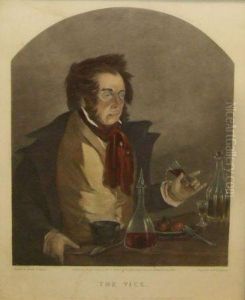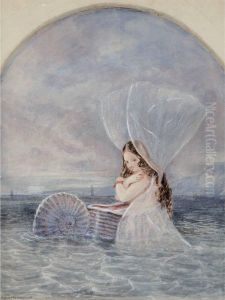Alfred H. Forrester Crowquill Paintings
Alfred Henry Forrester, who became widely known under the pseudonym Alfred Crowquill, was a multifaceted English artist, illustrator, and writer, born in 1804. His talents spanned across various domains of creativity, including literature, illustrating, and even acting, making him a notable figure in the Victorian era's vibrant artistic landscape. Forrester's choice of a pseudonym, under which he gained most of his fame, reflects the era's fondness for such whimsicalities among artists and writers.
Forrester's early life was one of creative exploration, leading him to adopt his pseudonym from a character in one of his own early works. His career as an illustrator saw him contributing to numerous publications of the time, including the Illustrated London News and Punch magazine, among others. His illustrations were known for their detailed whimsy and often satirical nature, capturing the essence of Victorian society with both humor and a critical eye. Forrester's work as Alfred Crowquill included illustrations for children's books, novels, and numerous periodicals, showcasing his versatile style that could range from the fantastical to the sharply realistic.
Beyond his illustrations, Forrester was also an accomplished writer, penning several books and stories, often illustrating them himself. His literary works, much like his illustrations, were characterized by a keen wit and a penchant for the fantastical. He was a contemporary of Charles Dickens and contributed to the same periodicals, sharing with Dickens a concern for social issues, which sometimes surfaced in his own writings and illustrations.
Forrester's contributions to the world of art and literature were significant, with his works capturing the imagination of the public and influencing the style of many illustrators and writers who followed. His ability to merge visual art with narrative was particularly notable, making his illustrated books and stories beloved by both children and adults. Despite the wide range of his creative outputs, it is perhaps his work as an illustrator that has left the most lasting legacy, with his unique style still recognized and appreciated today.
Alfred Henry Forrester passed away in 1872, leaving behind a rich legacy of artistic and literary achievements. His work continues to be studied and enjoyed, serving as a window into the Victorian era's complex social fabric and its rich cultural productions. Forrester's life and career exemplify the period's spirit of innovation and its lush, sometimes whimsical, creativity.

